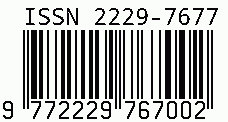
International Journal on Science and Technology
E-ISSN: 2229-7677
•
Impact Factor: 9.88
A Widely Indexed Open Access Peer Reviewed Multidisciplinary Bi-monthly Scholarly International Journal
Plagiarism is checked by the leading plagiarism checker
Call for Paper
Volume 16 Issue 2
2025
Indexing Partners



















Optimizing Data Storage & Retreival in Microsoft Azure for Scalable Application
| Author(s) | Upesh Kumar Rapolu |
|---|---|
| Country | United States |
| Abstract | Optimizing data management and retrieval is critical for scalable applications in today’s rapidly growing digital ecosystem. Microsoft Azure, through its robust storage solutions, particularly Azure Blob Storage, supports efficient data operations for cloud-based applications. This paper explores strategies for optimizing Azure Blob Storage, focusing on designing scalable architectures, analyzing workloads, and implementing containerization. Additionally, it examines tiered storage options—Hot, Cool, and Archive tiers—and lifecycle management policies to balance cost and performance. By leveraging Azure's capabilities, organizations can achieve enhanced scalability, efficient data retrieval, and cost-effective storage, providing a reliable foundation for modern applications. |
| Keywords | Azure Blob Storage, Scalable Applications, Data Management, Microsoft Azure, Cloud Computing, Containerization, Tiered Storage |
| Field | Engineering |
| Published In | Volume 16, Issue 1, January-March 2025 |
| Published On | 2025-01-29 |
| Cite This | Optimizing Data Storage & Retreival in Microsoft Azure for Scalable Application - Upesh Kumar Rapolu - IJSAT Volume 16, Issue 1, January-March 2025. DOI 10.71097/IJSAT.v16.i1.1646 |
| DOI | https://doi.org/10.71097/IJSAT.v16.i1.1646 |
| Short DOI | https://doi.org/g83jg2 |
Share this


CrossRef DOI is assigned to each research paper published in our journal.
IJSAT DOI prefix is
10.71097/IJSAT
Downloads
All research papers published on this website are licensed under Creative Commons Attribution-ShareAlike 4.0 International License, and all rights belong to their respective authors/researchers.

